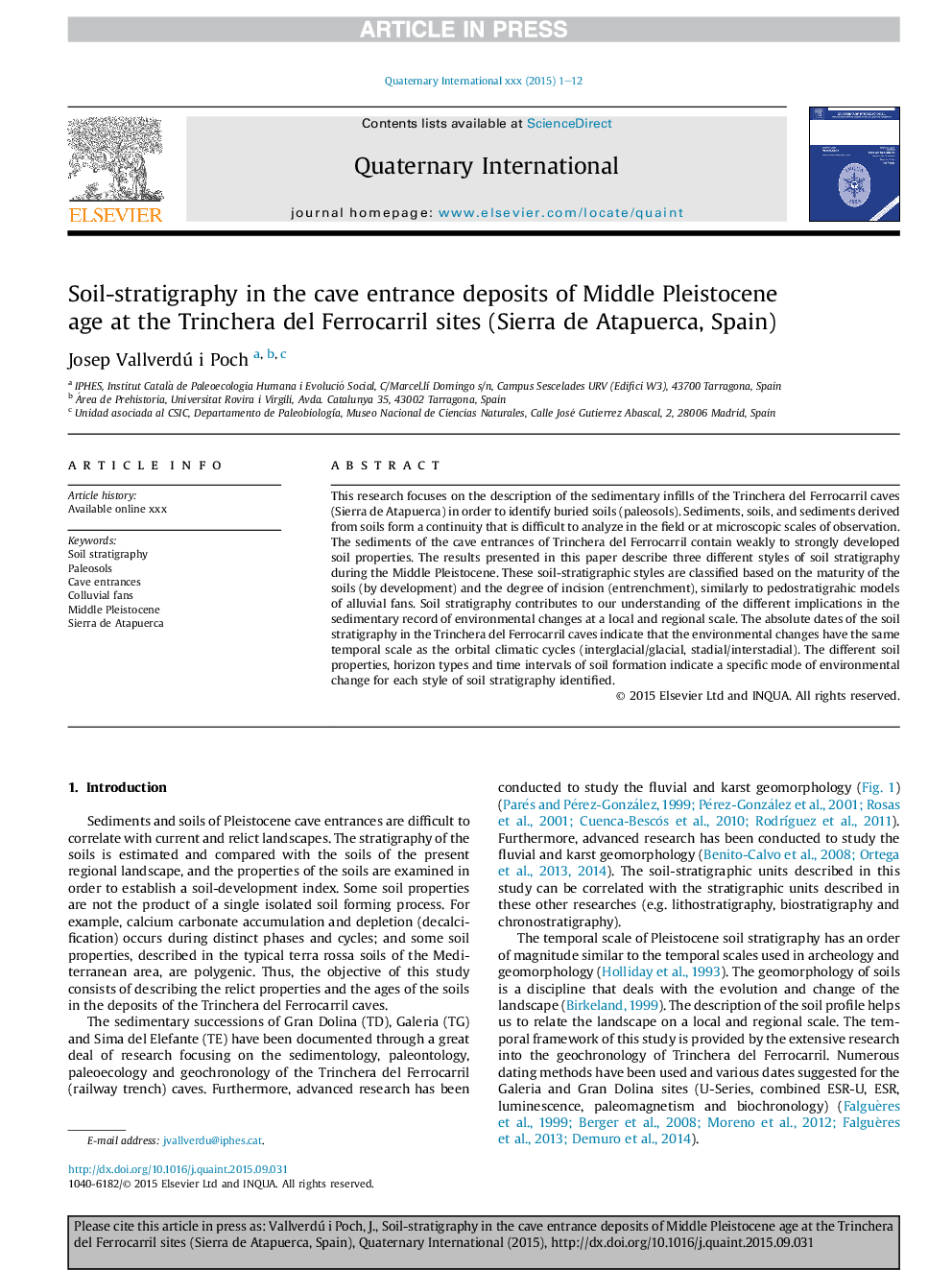| Article ID | Journal | Published Year | Pages | File Type |
|---|---|---|---|---|
| 5113665 | Quaternary International | 2017 | 12 Pages |
Abstract
This research focuses on the description of the sedimentary infills of the Trinchera del Ferrocarril caves (Sierra de Atapuerca) in order to identify buried soils (paleosols). Sediments, soils, and sediments derived from soils form a continuity that is difficult to analyze in the field or at microscopic scales of observation. The sediments of the cave entrances of Trinchera del Ferrocarril contain weakly to strongly developed soil properties. The results presented in this paper describe three different styles of soil stratigraphy during the Middle Pleistocene. These soil-stratigraphic styles are classified based on the maturity of the soils (by development) and the degree of incision (entrenchment), similarly to pedostratigrahic models of alluvial fans. Soil stratigraphy contributes to our understanding of the different implications in the sedimentary record of environmental changes at a local and regional scale. The absolute dates of the soil stratigraphy in the Trinchera del Ferrocarril caves indicate that the environmental changes have the same temporal scale as the orbital climatic cycles (interglacial/glacial, stadial/interstadial). The different soil properties, horizon types and time intervals of soil formation indicate a specific mode of environmental change for each style of soil stratigraphy identified.
Related Topics
Physical Sciences and Engineering
Earth and Planetary Sciences
Geology
Authors
Josep Vallverdú i Poch,
